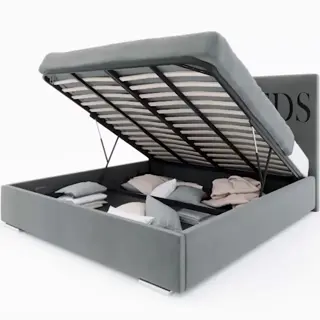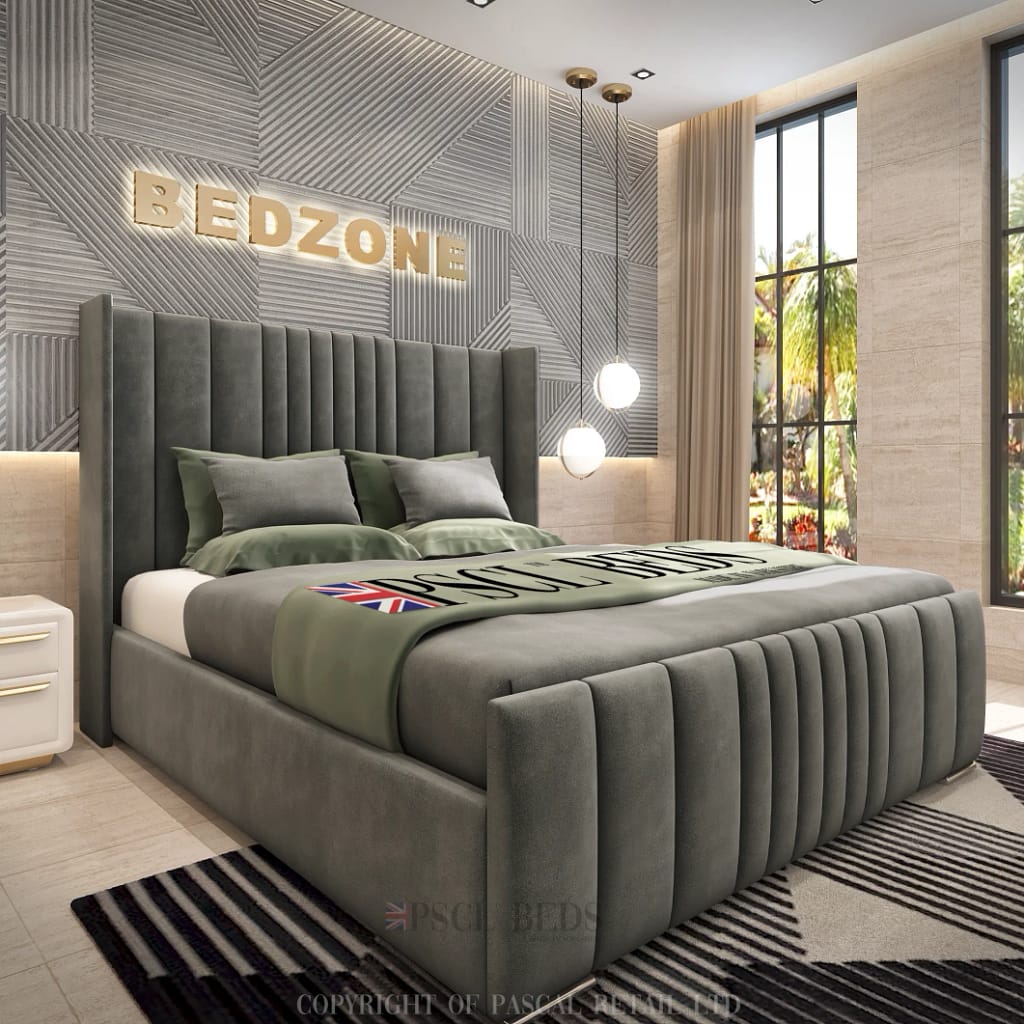What is the difference between a slatted base ottoman and a solid base ottoman?
At PSCL™ Beds, we offer two high-quality types of ottoman storage bed bases to suit different customer preferences and property requirements – the Slatted Ottoman Base and the Solid Ottoman Base. Each offers its own advantages depending on your needs for assembly, storage, mattress support, and delivery access.
1. Slatted Ottoman Base – Lightweight and Flexible Installation

The slatted ottoman base is constructed using a series of curved wooden slats, which are securely fitted into the bed frame. This style is ideal for those seeking a supportive yet slightly flexible mattress foundation.
Key Benefits of the Slatted Ottoman Base:
- Flat-packed for easy transport through tight hallways, stairs, or apartments.
- Takes longer to assemble than a solid base, but can be installed in rooms with limited access.
- Strong and supportive, designed to work well with most mattress types, offering even weight distribution.
- Durable wooden slats create ventilation for the mattress, which can help with airflow and moisture control.
This type is especially suitable for modern homes, flats, or spaces where access is restricted, and where flat-pack delivery is essential.
2. Solid Ottoman Base – Pre-Built Strength and Generous Storage

The solid ottoman base comes pre-assembled in two sections, which makes it ideal for homes with wide staircases or ground-floor rooms. It offers a premium feel with maximum stability and storage capacity.
Key Benefits of the Solid Ottoman Base:
- Constructed from solid wood panels for long-term durability and robust mattress support.
- No slats, so it provides a completely flat and firm surface for your mattress – excellent for heavier mattress types or those preferring a firmer feel.
- Larger internal storage capacity, split into two compartments, perfect for bedding, clothes, or household items.
- Quicker setup in the bedroom, as it arrives mostly pre-built, reducing assembly time significantly.
Because of its larger structure, we recommend this base for properties with ample access and stairwells wide enough to accommodate bulkier furniture.
Which Ottoman Base Should You Choose?
The decision between a slatted ottoman and a solid ottoman base often comes down to space availability, desired mattress support, and how much storage you need.
- Choose slatted if you need a flexible, breathable, and easily delivered option.
- Choose solid if you want maximum support, convenience, and larger storage, and your property allows for easy delivery access.
At PSCL™ Beds, all our ottoman beds are crafted in the UK using premium materials, ensuring that whichever base you choose, it is built to last and designed with both function and style in mind.


